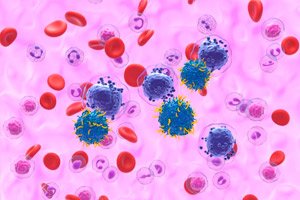
All iLive content is medically reviewed or fact checked to ensure as much factual accuracy as possible.
We have strict sourcing guidelines and only link to reputable media sites, academic research institutions and, whenever possible, medically peer reviewed studies. Note that the numbers in parentheses ([1], [2], etc.) are clickable links to these studies.
If you feel that any of our content is inaccurate, out-of-date, or otherwise questionable, please select it and press Ctrl + Enter.
How the Leukemia Virus Hides in the Body and What It Means for Future Treatments
Last reviewed: 09.08.2025

A research team from Kumamoto University has made a new discovery that shows how the human T-cell leukemia virus type 1 (HTLV-1) silently persists in the body. Their finding potentially lays the groundwork for developing new therapeutic approaches. In their paper, published in Nature Microbiology, they identified a previously unknown genetic “silencer” that keeps the virus in a dormant, untraceable state.
HTLV-1 is an oncogenic retrovirus that can cause adult T-cell leukemia/lymphoma (ATL), an aggressive and often fatal disease. Although most infected individuals remain asymptomatic throughout life, a subset eventually develop leukemia or other inflammatory diseases. The virus achieves long-term persistence by entering a “latent” state, where its genetic material hides within the host genome with minimal activity—avoiding detection by the immune system.
In this study, a team led by Professor Yorifumi Sato of the Joint Research Center for Human Retroviruses at Kumamoto University identified a specific region in the HTLV-1 genome that functions as a viral quencher. This sequence recruits host transcription factors, especially the RUNX1 complex, which suppresses viral gene expression. When this region was deleted or mutated, the virus became more active, leading to better recognition and elimination by the immune system in laboratory models.
Remarkably, when this HTLV-1 “quencher” was artificially inserted into the genome of HIV-1, the virus that causes AIDS, HIV became more latent, with reduced replication and reduced cytopathic effect. This suggests that the quencher mechanism could potentially be used to develop more effective therapies against HIV as well.
“This is the first time we have discovered a built-in mechanism that allows the human leukemia virus to control its own invisibility,” said Professor Sato. “It’s a clever evolutionary trick, and now that we understand it, we can change the course of treatment.”
These findings offer hope not only for understanding and treating HTLV-1, particularly in endemic regions such as southwest Japan, but also for a wider range of retroviral infections.
